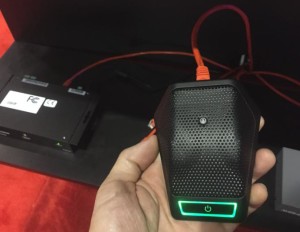The 26 Stage Audio Video Design Process – Best Practices
 Just like everything else in facility design, technology is getting more complicated. This means that it is more important than ever to get things right early. One of the best ways to do that is to have a structured plan in place. Building design follows and organized process and the Audio Video Design Process Fits Neatly within that structure. In this article, we’ll take a quick look at some audio video design process best practices to make your next project flow more smoothly.
Just like everything else in facility design, technology is getting more complicated. This means that it is more important than ever to get things right early. One of the best ways to do that is to have a structured plan in place. Building design follows and organized process and the Audio Video Design Process Fits Neatly within that structure. In this article, we’ll take a quick look at some audio video design process best practices to make your next project flow more smoothly.
The most important stage of AV design, in my opinion is programming. There are two reasons. The first reason is that this is where the biggest improvements can be made at the least expense. You can no longer think of a building without considering its audio, video, and technology.
This is particularly true for video. While the objective for audio is in many cases to make it as unobtrusive as possible, video is the exact opposite, we are putting screens in primary positions to make that as clearly visible as possible. We’ll come back to this at the end of the article. First, let’s review some best practices for the AV Design process. These vary slightly from project to project, but our basic workflow is detailed below.
During Schematic Design
• Modeling of spaces
• Address room orientations
• Furniture layouts
• Image sizes, and sightlines
• Acoustical requirements
• Lighting requirements
• Preliminary structural criteria
• Preliminary electrical criteria
• Preliminary HVAC criteria
During Design Development
Detailed Structural criteria
• Detailed Electrical criteria
• Detailed HVAC criteria
• Projection calculations
• Camera locations
• Detail of equipment rooms
• Millwork requirements
•Detail of presentation spaces
During Construction Documents Stage
Conduit riser drawings
• Floorplans and RCP drawings
• Section drawings
• Arch elevations & details
• Panel elevations
• Device and wiring schedules
• Oneline schematic diagrams
• Rack equipment elevations
• Project specifications
Facility Programming
At the beginning of this article I mentioned the importance of programming, particularly with respect to video. Let’s come back to that topic to wrap up our overview of the AV Design Process. In essence, I want to end at the beginning, since that’s the most important part.
The relationship between viewer distance, the type of content, and the screen size are all closely related. Building geometry will have a direct impact on sightlines. I have worked on several projects where the ceiling height restricted the size of the projected image. In some cases, it was too late and the budget couldn’t survive the U-Turn. They had to live with it. In other instances, it required redesign at a late stage. In one case, the client had to go back and reboot their capital campaign. Better to get this stuff right on the first attempt, than risk injuring the client relationship.
Room to Improve
The other reason that you can get so much more accomplished during programming is that the technology criteria are not yet set. I’ve been involved in several projects where I entered after the technology criteria had already been set and it was just a matter of figuring out “how to make it happen”. In these cases, you don’t want to try to create huge waves, but it’s a difficult situation.
Often, there is not an established process in place to determine technology requirements, based on actual needs and requirements. The questions of “What experience are you trying to create”, “What brand impact are you trying to achieve”, and “What business objectives are you trying to accomplish”, have never been asked or answered. Making the gadgets work together is really only half of the job description. A true design consultant (an increasingly rare breed), employs an established process to define goals and objectives and establish desired communication strategies before moving into all the gizmos and toys. If this stage doesn’t occur, then all the work that comes afterwards is built on a foundation of sand.
Conclusion
The fact is that with or without a strategy in place, you will end up with a design deliverable that will look the same. It may include the same types of drawings, and the same level of engineering. It can be hard to justify the intangible of a proper programming study. Doesn’t matter. Without it, you are building on sand. Following this analogy, I can say from personal experience that there is a lot of oceanfront property out there. I think it’s one of the main reasons that so many people have an adverse response to technology in large facilities. Their iPhone works, why doesn’t this other stuff. Their phone was designed starting with their needs and pain points. Their facility wasn’t.
 Brad Gallagher is an Audio/Video Design Consultant, who has worked with some of the largest Churches in the Country. He loves leading experienced teams on large projects and working with mid-sized Churches to do amazing things on a budget. Sign up for his blog for great Worship Technology Tips.
Brad Gallagher is an Audio/Video Design Consultant, who has worked with some of the largest Churches in the Country. He loves leading experienced teams on large projects and working with mid-sized Churches to do amazing things on a budget. Sign up for his blog for great Worship Technology Tips.
https://twitter.com/
https://www.linkedin.com/in/
https://plus.google.com/+
https://www.facebook.com/




